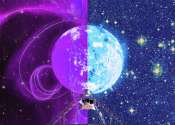Most collapsed stars fully rotate in seconds: This one takes nearly an hour
Australian scientists from the University of Sydney and Australia's national science agency, CSIRO, have detected what is likely a neutron star spinning slower than any other ever measured.









